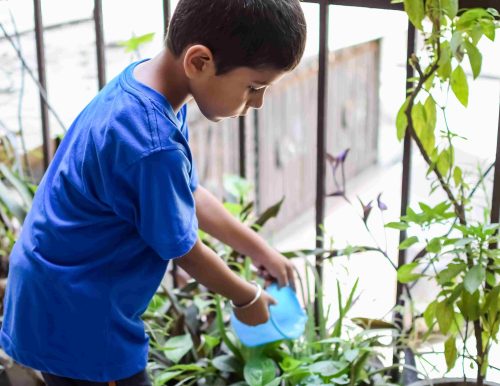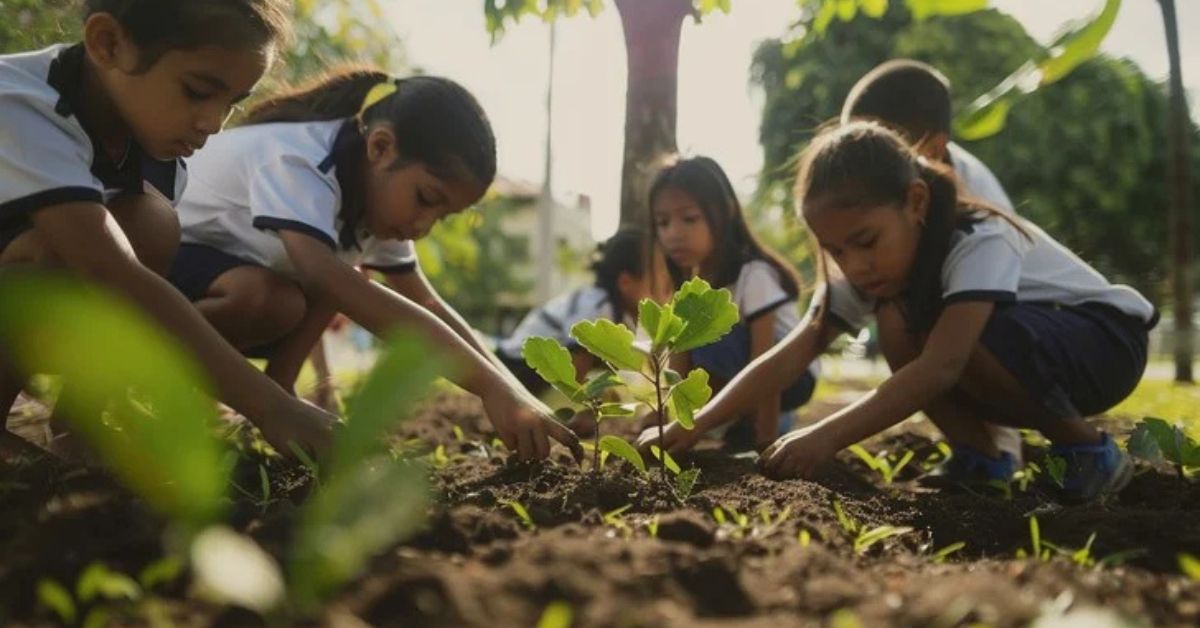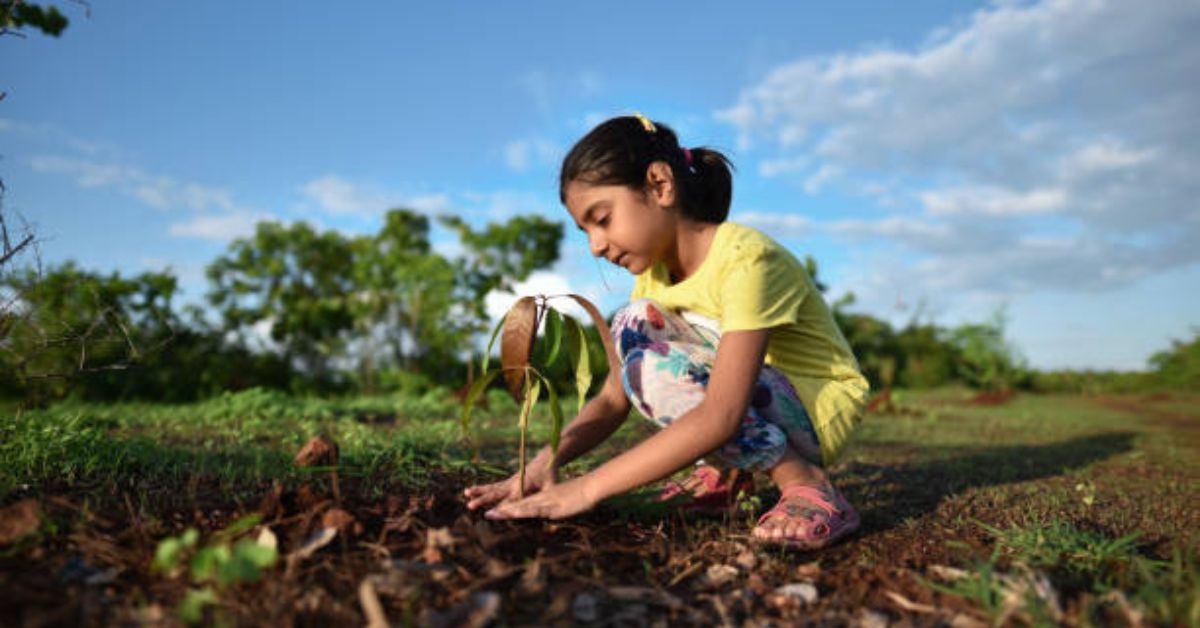How Gardening Teaches Kids Kindness, Patience & Responsibility
If you’ve ever seen a child cradle a fallen leaf like it’s a treasure, you already know that kids and nature share a quiet, magical bond. But in today’s world of screens, indoor routines, and digital distractions, this connection is fading fast. One of the simplest ways to bring it back? A handful of soil, a pot, and a curious little human.
Gardening isn’t just about growing things. It’s about slowing down, observing life, and learning how to care. And when children dig into the dirt, they’re not just planting seeds; they’re planting empathy, patience, and responsibility.
Gardening teaches kids to care for something beyond themselves

When a child plants a sapling and waters it every day, they’re doing more than just following instructions. They’re learning that living things need care, attention, and time. Watching a tiny seedling grow into a healthy plant makes them realise their actions have an impact, that their love, patience, and effort matter.
Over time, this consistent routine builds a sense of responsibility. Miss a few days of watering, and the wilted plant shows why showing up matters.
They learn that growth takes time
In a world of instant gratification, plants are a refreshing change. You don’t plant a tomato seed today and get a sandwich tomorrow. Gardening nudges kids to be patient. To water a sprout without seeing it bloom yet helps them to build trust that something which one cannot see is happening, but still is taking a form under the soil.
This slow unfolding helps children appreciate natural timelines, and not just for plants. They begin to understand that everything in life (friendships, skills, even healing) takes time to grow.
Nature becomes a friend, not a stranger
Once a child starts gardening, their relationship with nature changes. Ladybugs are no longer scary; they’re helpful. Earthworms become interesting instead of icky. Rain becomes exciting because it means the garden gets watered.
Suddenly, nature isn’t just ‘outside’. It’s personal. It’s where their marigold bloomed, where they saw their first butterfly land. And when kids connect personally with nature, they’re more likely to care about the planet in the long run, not because someone told them to, but because they want to.
Gardening builds emotional resilience
Believe it or not, gardening can help kids cope with disappointment and uncertainty. Sometimes a seed doesn’t sprout. Or a plant they’ve nurtured for weeks gets eaten by snails. While that can be heartbreaking, it’s also an important life lesson.
 Gardening becomes a gentle teacher of emotional resilience. Picture Source: stockcake
Gardening becomes a gentle teacher of emotional resilience. Picture Source: stockcake
They learn that not everything is in their control, that some things go wrong, and it’s okay to feel sad and then try again. In that way, gardening becomes a gentle teacher of emotional resilience.
It’s a quiet space for joy, focus, and reflection
Not every child loves high-energy activities. For some, gardening offers a safe, quiet space where they can focus, get their hands dirty, and just be themselves. There’s no competition, no performance pressure. Just soft soil, curious bugs, and the joy of watching something grow.
It’s especially therapeutic for anxious or sensitive children who thrive in calm, sensory-rich environments.
Fun gardening activities to get kids started
Don’t worry, you don’t need a backyard or fancy tools to get started. Here are a few simple, fun gardening ideas that can kickstart your child’s green journey:
1. Grow a tomato plant from kitchen scraps
Cut the tomato, scoop out some seeds, dry them, and plant them in a small pot. It’s a great way to teach that food doesn’t come from a packet — it comes from soil, sun, and patience.
2. Make a ‘recycled pot garden’
Use old teacups, plastic bottles, or tin cans to make quirky little planters. Let your child decorate them with paints and stickers. Bonus: they’ll feel more attached to their plant when the pot feels personal.
 Instead of just telling them to water your plants, give them their own plant. Picture source: iStock
Instead of just telling them to water your plants, give them their own plant. Picture source: iStock
3. Create a butterfly corner
Plant flowers like marigolds, hibiscus, or milkweed to attract butterflies. Watching them flutter around is pure magic — and teaches children about pollination and ecosystems without any textbooks.
4. Make a compost-in-a-bottle
Layer kitchen waste, leaves, and soil in a clear bottle to show how decomposition works. It’s a science lesson disguised as a cool experiment.
5. Give them a plant as a responsibility buddy
Instead of just telling them to water your plants, give them their own plant — one they name and care for. It becomes a friend, a routine, and a tiny responsibility rolled into one.
Growing more than just plants
In the end, gardening is about a lot more than vegetables or flowers. It’s about slowing down in a fast-paced world.
And for a child, it’s a chance to build kindness in a world that could use a little more of it. With every sprout, they’re not just growing a plant — they’re growing a part of themselves.
News